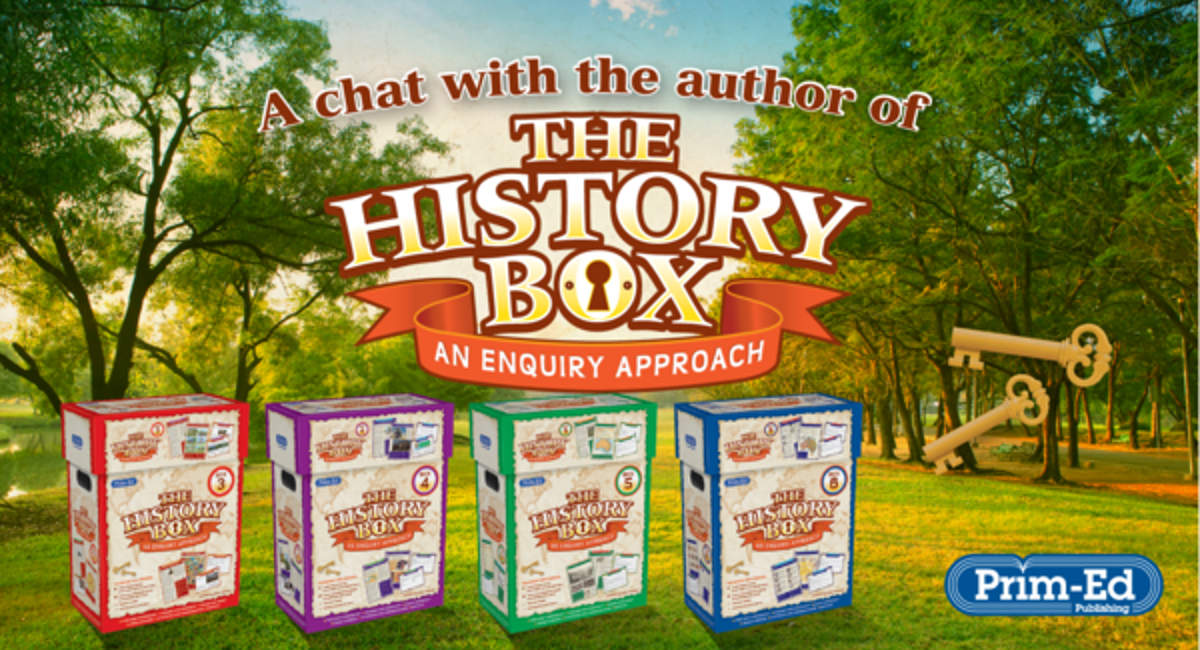- Thursday 07 November 2019
Where did the idea for The History Box come from?
Having used a number of history programmes with my pupils over the years, I found that the resources available for teaching history in the primary school were all quite similar to one another. I realised that there was an opportunity to bring together clear, accurate and interesting content, presenting it in a completely new format. It seemed clear to me that you could pique teachers’ interest in a different approach to the teaching of history by prioritising integration, assessment, ICT and project work in a completely new resource. A resource of this kind would have clearly worded, age-appropriate content, supported by appealing artwork and simple comprehension and written activities all under the same theme. Such a resource would ensure that the teaching of history is brought to life in the classroom. Prim-Ed Publishing had plenty of ideas, too, and when we came together, we devised a history resource which I believe is unique in the Irish primary school environment and which explores content based on local, national and international topics, which are important in Irish schools.
Who would benefit from The History Box and why?
The main beneficiaries will of course be the pupils. The History Box will allow them to work individually, in groups and in whole-class situations on any theme. We have not neglected comprehension or written work, which is hugely important. Furthermore, it is hoped that by using QR codes, Internet links, interactive games, research and integration with music, drama and art, that the children will relish the next opportunity to learn history through many different avenues. The History Box can be used in whole-class and group work situations but is also ideal for individual pupil work. This will be of benefit to teachers, who will be able to use The History Box according to their own classroom contexts.
What advantages will The History Box bring to a school?
The History Box is a versatile resource, something which should be of immense benefit to all schools. It can be used instead of a textbook, and teachers can be secure in the knowledge that their pupils are covering every strand of the curriculum. It can be used as a supplementary resource and brought out for project work or for early finishers. The Teacher Resource Book, with its photocopiable sheets, is particularly useful in that regard. As a teacher in a small school, I was mindful that The History Box had to be able to work in a multi-class setting. I think this has been achieved and any school, big or small, will see advantages to having The History Box as a central part of their bank of resources.
What is the most interesting part of The History Box series?
As a great lover of history, it has to be the content itself. The pupils will learn about the world around them through a variety of means – exploring history from the Stone Age all the way up to the present day. They will study early people and societies in Ireland and abroad. They will learn about war and famine, but also about great pioneers, inventors, explorers and humanitarians who made the world a better place. We have not only addressed famous historical figures, but also ordinary people and how they lived their day-to-day lives. There is plenty of scope for pupil-led discovery, allowing the pupils to use the skills of a historian to find out more about topics which interest them. My main goal is for pupils to enjoy history through interacting with the content and activities of The History Box, hopefully leading them to find the subject as interesting as I do.
What was the hardest part about writing The History Box?
I really enjoyed it. Time constraints and deadlines are always stressful, but I set out a plan and stuck to it for the most part. Putting together the Teacher Guide and the Teacher Resource Book and getting familiar with the nuts and bolts of the curriculum took some time but it was a great learning curve for me as a teacher. It has all been worthwhile now and I am excited to see the reaction of Irish teachers and children to this resource. I would like to thank Prim-Ed, in particular Éamonn Parkinson and Sara Kehoe, for all their help. It has been a pleasure.
